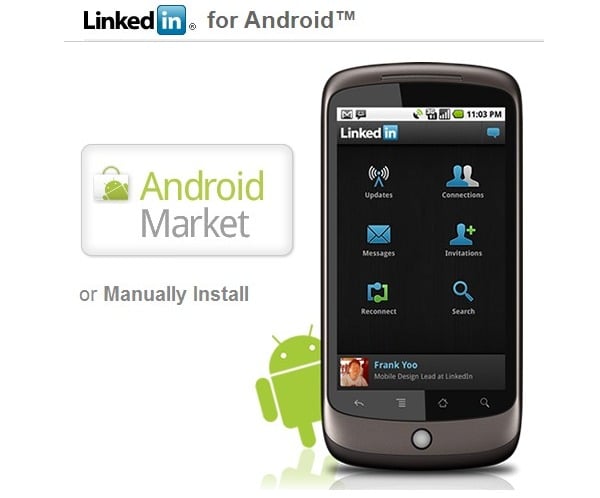Although ‘business social’ site LinkedIn started off slower and with seemingly less traction than Twitter, a recent study showed that LinkedIn is now considered the most important social media network, with 60% of respondents saying that having a LinkedIn account is more important than any other social network.
Since so many business users of social media carry smartphones, it seems that one necessary element in any strategy is to have a mobile application for iPhone, Blackberry and Android devices. As many have found, implementing a full-featured interface for sites such as Facebook or LinkedIn is daunting, as is keeping user data secure.
Android users – especially those using older phones – have always had a ‘special’ problem that I like to call the ‘DOS effect’. Basically, even if you have a 16GB SD card installed with nearly nothing on it, you can be sure that your Motorola Droid or HTC Desire is going to be constantly complaining about ‘low memory’. That is because Android uses ‘internal’ and ‘external’ memory – something we’ve discussed here multiple times.
The reason I mention this is because LinkedIn is amongst the many Android apps that won’t allow themselves to be moved to the SD card, something I do slavishly despite no longer being nearly as constrained as I was with the Droid. I know there are some system-level apps that it makes sense NOT to allow to migrate off the phone itself, but I wondered about things like LinkedIn … and apparently I wasn’t alone. Here is a post from the LinkedIn for Android group
Why we don’t support installing to the SD card
A number of people have asked why we don’t support installing the app to an SD card. The short-version:Google recommends we not offer the feature based on several platform features we are using (the Sync Adapter/Framework), and features we plan to use in the future (e.g. widgets). For the more technically-minded folks, there’s a write-up here on the Android Dev site.
We’ll always consider changes in the future, but the downsides to the user experience from using install-to-SD currently outweigh what we ultimately want to deliver in terms of features and user experience.
It you look at the Android developer site link he mentions, here is what you find:
•You can allow your application to install on the device’s external storage.
•Some types of applications should not allow installation on the external storage.
•Installing on the external storage is ideal for large applications that are not tightly integrated with the system (most commonly, games).
There is a ton of information on that page and in links from the page that are definitely worth checking out if you are so inclined. But for me it answered the basic question about what we should and shouldn’t expect to be able to move, which is definitely more productive than just calling all Android developers who didn’t implement SD card moves ‘lazy’.

